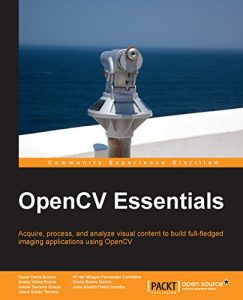About This Book
- Create OpenCV programs with a rich user interface
- Develop real-world imaging applications using free tools and libraries
- Understand the intricate details of OpenCV and its implementation using easy-to-follow examples
Who This Book Is For
This book is intended for C++ developers who want to learn how to implement the main techniques of OpenCV and get started with it quickly. Working experience with computer vision / image processing is expected.
What You Will Learn
- Explore advanced image processing techniques such as the retina algorithm, morphing, and color transfer
- Create programs using advanced segmentation tools such as the new connectedComponents and connectedComponentsWithStats functions
- Use flood filling along with the watershed transform to obtain better segmentations
- Explore the new powerful KAZE features
- Use advanced video-based background/foreground segmentation for class BackgroundSubtractor and ECC-based warping
- Leverage the available object detection frameworks and the new scene text detection functionality
- Get a grasp of advanced topics such as machine learning and GPU optimization
In Detail
OpenCV, arguably the most widely used computer vision library, includes hundreds of ready-to-use imaging and vision functions used in both academia and industry. It mainly focuses on real-time image processing. As cameras get cheaper and imaging features grow in demand, the range of applications using OpenCV increases significantly, both for desktop and mobile platforms.
The book provides an example-based tour of OpenCV's main modules and algorithms, including the latest available in version 3.0. Starting with the setup and description of the library, this book teaches you how to add graphical user interface capabilities to OpenCV programs. Further, you will learn about the essential techniques such as image processing, image segmentation, object detection, and motion, which will help you process and analyze images better. You will also learn how to extract 2D features from images and how to take advantage of machine learning. By the end of this book, you will completely understand how to put those computer vision techniques into practice.






